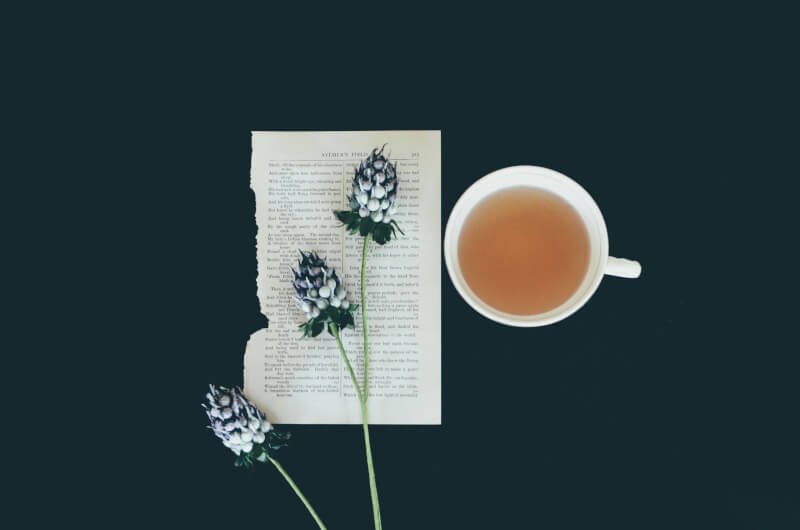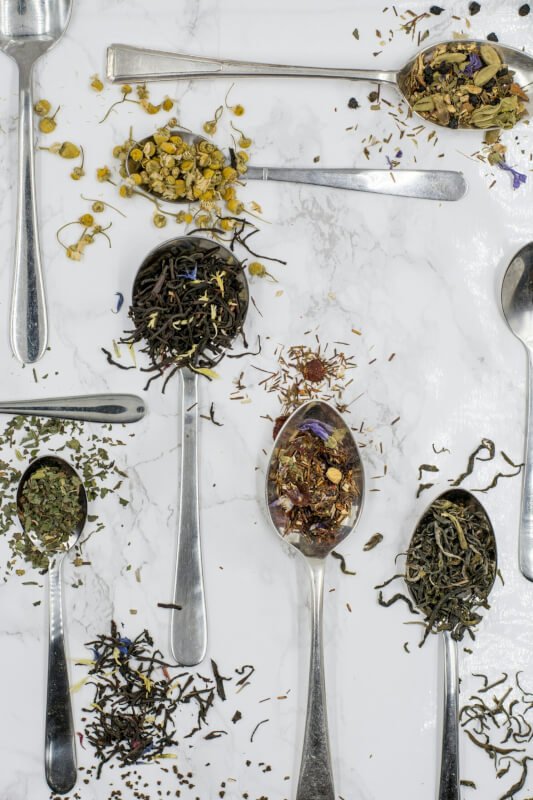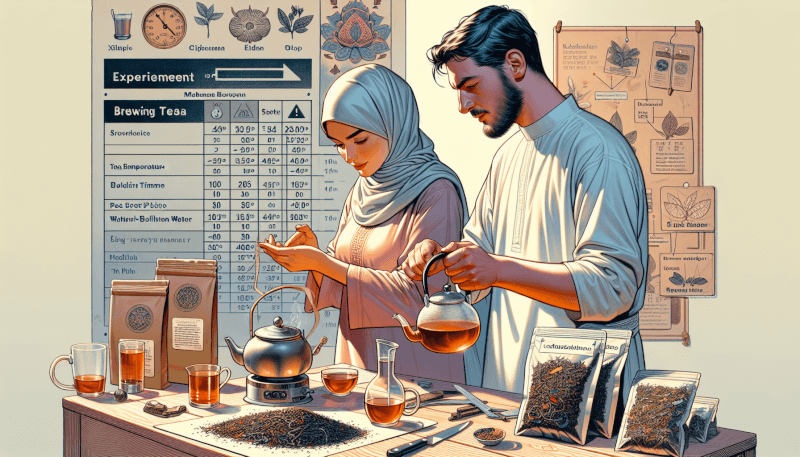Tea lovers unite! If you’ve ever wondered how to achieve the perfect tea concentration, look no further. In this article, we’ll unveil the secrets to brewing a cup of tea that’s not too weak or too strong, but just right. From selecting the right tea leaves to mastering the brewing time, we’ll guide you through each step to ensure you savor every sip of your favorite beverage. So grab your favorite mug and get ready to embark on a tea adventure like no other. Whether you’re a tea connoisseur or a novice, our tips and tricks will surely elevate your tea-drinking experience to new heights. Cheers to the perfect tea concentration!
Understanding Tea Concentration
Tea concentration refers to the strength or intensity of flavor in a cup of tea. It is determined by the amount of tea leaves used, the steeping time, water temperature, and other factors. Achieving the perfect tea concentration is crucial for a delightful tea experience.
Factors Affecting Tea Concentration
Several factors can significantly impact tea concentration. The first is the quality of the tea leaves themselves. Higher quality tea leaves tend to yield a stronger and more flavorful brew. Additionally, the steeping time plays a vital role. Longer steeping times generally result in a more concentrated tea. The water temperature also influences tea concentration, as hotter water extracts more compounds from the leaves. Lastly, the tea-to-water ratio is crucial. Using too little tea leaves can result in a weak brew, while using too many can make the tea overpowering.

Why Achieving Perfect Tea Concentration is Important
Achieving the perfect tea concentration is key to enjoying a truly satisfying cup of tea. When the concentration is just right, the flavors are well-balanced, and the aroma is enticing. A well-concentrated tea delivers a harmonious blend of flavors that invigorate your senses. It allows you to experience the subtle nuances and complexities of different tea varieties. Moreover, a well-balanced tea concentration ensures that the tea is not overly bitter, astringent, or weak, enhancing your overall tea-drinking experience.
Choosing the Right Tea
Exploring Different Tea Varieties There is a vast assortment of tea varieties available, each with its unique flavors, aromas, and characteristics. From delicate green teas to robust black teas, floral oolongs to earthy pu-erhs, and fragrant herbal infusions, the choices are endless. It is essential to explore and experiment with different tea varieties to find the ones that suit your taste preferences best. Whether you prefer a bold and strong cup or a mellow and subtle infusion, there is a tea out there for you.
Identifying Tea Grades Tea grades signify the quality of the tea leaves and play a crucial role in determining the concentration and overall taste. The higher the grade, the better the tea quality. Grades are often categorized based on leaf appearance and size. For example, whole leaf teas are considered higher grade than broken or fannings teas. When selecting tea, it is advisable to opt for higher-grade leaves, as they generally yield a richer and more concentrated brew.
Factors to Consider When Selecting Tea When choosing the right tea for your desired concentration, several factors should be taken into account. First, consider your personal taste preferences. Some teas have bolder flavors, while others are more delicate. Also, think about the occasion and the time of day you plan to drink the tea. Different teas are better suited for morning vs. evening consumption. Additionally, consider any health benefits you may be seeking from your tea, such as relaxation, digestion, or immunity-boosting properties.

Preparation Techniques
Measuring the Correct Tea Amount Accurately measuring the tea leaves is crucial for achieving the desired concentration. The general rule of thumb is to use approximately one teaspoon of loose leaf tea for every eight ounces of water. However, this ratio may vary depending on the type of tea and personal taste preferences. Experimenting with different tea-to-water ratios will help you fine-tune the concentration to your liking.
Determining the Ideal Water Temperature Water temperature significantly affects tea concentration. As a general guideline, delicate teas like green and white teas should be brewed with water around 170-185°F (77-85°C). Black teas and oolongs, on the other hand, benefit from hotter water between 195-212°F (90-100°C). Herbal infusions can withstand boiling water temperatures since they are not derived from the Camellia sinensis plant. By maintaining the appropriate water temperature, you can optimize the extraction of flavors from the tea leaves and achieve the desired concentration.
Understanding Steeping Time The duration that tea leaves are steeped also influences the concentration. Steeping time varies based on the tea type and personal preference. For lighter teas such as green and white teas, shorter steeping times of around 1-3 minutes are recommended to avoid bitterness. Black teas and oolongs generally benefit from longer steeping times of 3-5 minutes. However, this can be adjusted according to personal taste. Experimenting with varying steeping times will allow you to discover the optimal concentration for each tea variety.
Benefits of Pre-Washing the Tea Pre-washing, also known as rinsing or awakening the tea, involves pouring hot water over the tea leaves and quickly discarding the water before the actual steeping process. Pre-washing allows any impurities or dust on the tea leaves to be removed, ensuring a cleaner and more concentrated brew. Additionally, it helps awaken the flavors and aromas of the tea, enhancing the overall tea experience.
Water Quality and Tea Concentration
Importance of High-Quality Water Water quality is often overlooked but plays a crucial role in tea concentration. Using high-quality water is vital to achieving a delicious and well-concentrated brew. Water that is low in impurities and has a balanced mineral content allows for better extraction of flavors from the tea leaves. It is advisable to use filtered water or spring water to avoid any unpleasant tastes or aromas that may affect the final concentration.
Filtered Water vs. Tap Water Tap water quality can vary significantly depending on your location. While some tap water may be suitable for brewing tea, others may contain higher levels of impurities or minerals that can impact the concentration and taste. Using filtered water helps remove chlorine, heavy metals, and other impurities that may interfere with the tea’s flavors. It is recommended to filter the water before brewing tea, especially if your tap water has a noticeable taste or odor.
Mineral Content and its Impact on Tea Quality The mineral content of water, particularly calcium and magnesium, can influence tea concentration and taste. Water with the right mineral composition enhances the natural flavors of the tea, producing a well-rounded and robust brew. Conversely, water that lacks minerals may result in a weak and bland cup of tea. Experimenting with different mineral compositions or using bottled mineral water can help you achieve the optimal balance of minerals for your desired concentration.

Steeping Methods
Traditional Steeping Traditional steeping involves using a teapot or teacup and steeping the tea leaves directly in hot water. This method allows for full interaction between the water and tea leaves, ensuring a well-concentrated brew. Once the desired steeping time is reached, the tea is then poured through a filter or strainer to separate the leaves from the liquid.
Gongfu Cha Technique Gongfu Cha is a traditional Chinese tea preparation method that emphasizes multiple short infusions to extract the full flavor potential of the tea leaves. This method involves using a small teapot or gaiwan and a relatively high tea-to-water ratio. The tea is steeped for short durations, typically 10-30 seconds, which allows for precise control over the concentration. Gongfu Cha is particularly popular for oolongs and pu-erhs.
Western Steeping Western steeping is the most common method used in many Western countries. It involves steeping the tea leaves in a teapot or directly in a mug using a tea infuser. The tea is brewed for a longer duration, usually 3-5 minutes, to achieve a well-rounded and flavorful cup. Western steeping is suitable for most tea varieties and is a convenient and straightforward method for everyday preparation.
Cold Brew Method Cold brewing is a unique method that involves steeping the tea leaves in cold or room temperature water for an extended period, usually several hours or overnight. This slow extraction method results in a milder and smoother flavor profile with lower caffeine content. Cold brewing is popular for delicate teas like green or white teas and is an excellent option for hot summer days or those who prefer a less concentrated tea.
Teaware and Accessories
Teapots and Tea Infusers Teapots and tea infusers are essential tools for preparing tea. Teapots come in various sizes and materials, such as ceramic, glass, or cast iron. They allow for the leaves to interact with the hot water and infuse the flavors. Tea infusers are small mesh or perforated containers that hold loose tea leaves and can be placed directly in a cup or a teapot for steeping.
Tea Cups and Mugs Tea cups and mugs come in different sizes and shapes, each designed to enhance the tea-drinking experience. Some cups have wide rims, allowing the tea’s aroma to be enjoyed fully, while others have narrower rims to concentrate the aromas. Double-walled cups are ideal for retaining heat, while larger mugs are perfect for those who enjoy drinking more substantial quantities of tea.
Tea Strainers and Filters Tea strainers and filters are used to separate the brewed tea leaves from the liquid. They come in various forms, including mesh strainers, fine-mesh tea balls, and disposable paper filters. The choice of strainer or filter depends on personal preference and the type of tea being brewed. Some teas may require a finer filter to prevent particles from escaping into the cup.
Tea Timers and Thermometers Tea timers and thermometers are helpful accessories to ensure accurate steeping times and water temperatures. Timers can be digital or analog and help you keep track of the ideal steeping duration. Thermometers are useful in determining the water temperature precisely, especially for teas that require specific temperature ranges. These accessories aid in achieving the perfect tea concentration with consistency.

Understanding Tea Ratios
Determining the Ideal Tea-to-Water Ratio The tea-to-water ratio is a critical factor in achieving the desired tea concentration. As a general guideline, one teaspoon of loose leaf tea per eight ounces of water is recommended. However, this ratio can vary depending on personal preference and the strength of flavor desired. Increasing the amount of tea leaves or reducing the water quantity will result in a stronger and more concentrated brew.
Ratio Variations for Different Tea Types Different tea types may require varying tea-to-water ratios to achieve the optimal concentration. Delicate teas like green and white teas may benefit from a lower tea-to-water ratio to avoid overpowering the flavors. Stronger teas like black and pu-erh may require a higher tea-to-water ratio to achieve the desired strength. It is essential to experiment and adjust the ratios based on the type of tea being brewed.
Factors Impacting Optimal Tea Ratios Several factors can impact the ideal tea-to-water ratio for a specific tea. The quality and freshness of the tea leaves play a significant role. Higher-quality leaves often yield a more concentrated brew, allowing for a lower tea-to-water ratio. Steeping time and water temperature also affect the concentration, so adjusting the ratio may be necessary to balance these factors. Personal taste preferences are crucial as well, as some individuals may prefer a stronger or milder cup of tea.
Temperature Control
Ideal Temperature Ranges for Different Teas Different teas require specific temperature ranges to achieve the optimal concentration and flavor. Delicate teas like green and white teas should be brewed with water around 170-185°F (77-85°C) to avoid bitterness. Black teas and oolongs benefit from hotter water between 195-212°F (90-100°C) to extract their robust flavors. Herbal infusions can withstand boiling water temperatures. By maintaining the appropriate water temperature, you can fine-tune the tea concentration to your liking.
Maintaining Consistent Water Temperature Consistency in water temperature is crucial for repeatability and achieving desired tea concentration. Investing in a reliable kettle with temperature control or using a thermometer ensures that the water is heated to the correct temperature consistently. Avoiding drastic temperature changes during the brewing process helps maintain the integrity of the tea leaves and create a more consistent flavor profile in each cup.
Adjusting Temperature for Personal Preference While specific temperature ranges are recommended, personal taste preferences may vary. Some individuals may enjoy a slightly higher or lower water temperature to achieve their desired flavor profile. Experimenting with water temperature variations can provide insight into the impact of temperature on tea concentration and allow you to discover your preferred brewing method.

Steeping Time Guidelines
General Steeping Time Recommendations Steeping time greatly affects tea concentration and flavor. As a general guideline, delicate teas like green and white teas are steeped for 1-3 minutes to avoid bitterness. Black teas and oolongs benefit from longer steeping times of 3-5 minutes. Herbal infusions are often steeped for more extended periods, up to 5-7 minutes, to extract the maximum flavors. These recommendations serve as a starting point, and steeping times can be adjusted based on personal preference.
Adapting Steeping Time to Tea Varieties Each tea variety has its unique characteristics that require different steeping times for optimal concentration. For example, a delicate green tea may become bitter if steeped for too long, while a robust black tea may not release its full flavors if steeped too briefly. Experimenting with various steeping times for different tea varieties will help you find the perfect balance and concentration that suits your taste preferences.
Exploring Multiple Infusions Many high-quality teas can be steeped multiple times, each infusion offering a distinct flavor profile. By adjusting the steeping time for each subsequent infusion, you can extract new layers of flavors from the tea leaves. Typically, each successive infusion requires longer steeping times to achieve similar concentrations. Multiple infusions allow tea enthusiasts to fully appreciate the complexities and nuances of various tea varieties.
Advanced Techniques for Concentration
Using Timing and Temperature to Adjust Concentration Adjusting the timing and temperature during brewing can be useful for achieving the desired concentration. If a tea is too weak, extending the steeping time or increasing the water temperature can help extract more flavors from the leaves. Conversely, if a tea is too strong, reducing the steeping time or using slightly cooler water can yield a milder cup. These adjustments require experimentation and practice to find the sweet spot for each tea and personal preference.
Understanding Tea Leaves Unfolding Certain types of teas, such as rolled oolongs, unfold or unfurl during steeping. This process releases the trapped flavors and aromas within the leaves, resulting in a more concentrated and flavorful brew. Paying attention to the unfurling of tea leaves during steeping can help you gauge the optimal concentration. As the leaves unfurl, they release their essence, and the flavor concentration increases.
Experimenting with Different Tea Preparation Parameters Tea preparation is a fascinating art that allows for endless experimentation. Adjusting various parameters, such as tea-to-water ratio, steeping time, water temperature, and even the order of pouring water, can lead to different concentrations and flavor profiles. Engaging in exploration and trying out new combinations will help you develop a deeper understanding of tea concentration and discover unique and personal ways to achieve the perfect cup of tea.


